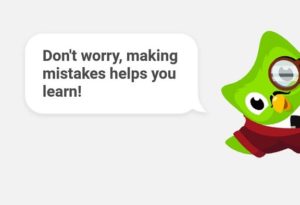And 10 Steps to Get Back on Track If You Do Get Burnt Out
There’s some debate as to whether or not language-learning burnout exists. Despite what a few polyglots might think, burnout is real. Many experience it. And its consequences can be devastating to your language-learning goals. If you’re trying to reach fluency in a new language, then you need to know what the warning signs of burnout are and how to avoid them. It’s like that old saying, the best exercise plan is the one you stick with until the end.
What Is Language Learning Burnout?
Generally speaking, burnout is common (and not just in language-learning). A Gallup poll found that 23% of employees felt burnt out at work. And 44% felt some kind of burnout beyond their professional lives. In fact, the World Health Organization (WHO) has even recognized the condition. WHO defines it as “a syndrome conceptualized as resulting from chronic workplace stress that has not been successfully managed.” But that’s workplace burnout. Surely that has nothing to do with language-learning burnout, right?
Not exactly. Any time you do anything that feels overwhelming, where tasks continue to pile up without relief in sight, you can experience burnout. In short, burnout happens when you try to handle more than you can for too long. You cannot keep up. You get stretched too thin. And in the end, something inside you SNAPS. That’s burnout.

Why Do People Get Burnt Out Learning Languages?
Once you stand back and take a look at what a language is, it’s easy to see how some people can get burned out trying to learn one. Languages have numerous components. Vocabulary. Grammar. Syntax. Style. Dialects. There’s a nearly endless collection of rules and structures you have to learn…and remember.
There are also 4 domains to every language. To master any language, you need to be able to read, write, speak, and listen well. Often when people start learning a language, many people only focus on one or two of these domains. When they try incorporating the others, they’re dealt with a sudden blow as they realize the language they were “cruising through” on an app like Duolingo didn’t actually get them as far as they thought it did.
The amount of time you need to learn a language is an issue as well. Institutions like FSI say that you need anywhere between 575 – 2200 hours to learn a language, depending on its difficulty. If accurate, then studying Chinese for 30 minutes a day, EVERY DAY, would take you 12 YEARS to learn.
OUCH. (Luckily, that’s not exactly accurate).
When you start to look at the big picture of what it’s like to actually learn a language, then you begin to see why someone could feel burnout at any point in their journey to fluency. But rather than discourage you, this is meant to show you that if you’re feeling any of these thoughts or frustrations, it’s okay. You’re not alone.
And to be honest, you’re actually in a really good place…
Recognizing the Symptoms of Language-Learning Burnout

There are a lot of symptoms that indicate burnout. The first step to getting back on track to fluency is to recognize those symptoms. Once you do that, you can take action and avoid the long-lasting ramifications of untreated language-learning burnout.
The Symptoms of Language-Learning Burnout
- Feeling cynical, defeated, hopeless, or apathetic
- Lack of patience
- Difficulty starting lessons
- Problems with memory
- Irritability or moodiness
- Lacking the energy
- Difficulty concentrating
- Putting off lessons
- Recurring physical symptoms like headaches when studying or thinking about studying
- Reduced sense of accomplishment
The Importance of Treating Language Learning Burnout
Burnout is a serious condition that needs to be treated immediately as it can have serious side effects. It can cause fatigue, insomnia, substance abuse, emotional frustration, and even serious health concerns like heart disease and Type 2 Diabetes.
If you’re a language-learning trying to reach fluency, experiencing burnout can slow down your progress. Worse, it can leave you to give up on your dream of reaching fluency altogether.
How to Treat Language Learning Burnout

It’s important to realize that burnout will not go away on its own. You cannot push through language lessons hoping that it’ll all blow over. Burnout doesn’t work like that. That would be like trying to run faster to get over a runner’s cramp. Instead, you need a plan to treat your burnout so that you can recover and get back to learning a new language quickly.
Step 1: Recognize burnout
Review the symptoms and decide whether or not you’re dealing with burnout or stress. Stress is common. We all have stress. Life throws things our way that we don’t expect. We then have to work harder to overcome those obstacles. That’s common.
But burnout is different. It feels like you’re drowning. It’s the persistent feeling that despite all the work you do, you’re not getting anywhere, never catching up. Know the difference.
Step 2: Take a break
You’re going to need a full stop from your language learning lessons. Trying to power through will only delay you. Close the books, turn off the apps, pause the language learning CDs, and walk away. Realize it’s for the best, and give yourself permission to take a break.
Step 3: Hit the reset button
You need a proper break. That means you need to completely disconnect from learning your target language. Use your free time to focus on something else. This could be for a day, a weekend, or longer, depending on how severe the burnout is.

Step 4: Have fun
For you to get the most out of your break, you need to relax and have fun. Disconnect from your phone, social media, and other potentially stressful distractions. Instead, do something meaningful. Go for a walk. See a movie. Watch a film. Take a vacation. Do something that gets you away from what’s really frustrating you and helps the symptoms go away.
Step 5: Take care of yourself
Burnout is a complex condition that is often the result of overworking. When we overwork ourselves, we forget to take care of ourselves. We need to eat properly, exercise, and most importantly, sleep if we’re going to get healthy. Food, exercise, and rest also support better language learning. So, it’s never a good idea to neglect your health on the path to fluency.
Step 6: Set routines and structures
When something is routine, it’s less likely to cause you stress when you do it. It’s simply something that you do. And with set language learning structures in place, you’ll define a time to spend learning your language in a stress-free environment. That’s key to learning any language. Over time, you’ll see far better results for your efforts, giving you the motivation to continue.
Step 7: Reevaluate your goals

If you want to be successful, you need goals. But it’s easy to get lost in the forest looking for the trees. Learning a language is a complex journey that will take time. You need to reevaluate why you’re learning a language. Setting SMART goals can help, for sure. But, the key thing here is to go beyond simply focusing on “learning the language” as your goal.
Focus on your “why”. Why are you learning a new language? What’s the main goal here? Remembering that during tough times will help you avoid burnout on your climb towards fluency.
Step 8: Reevaluate your strategies
Not all language-learning strategies are created equally. Some focus on dated school practices like memorization and drilling. If your lessons are boring or feel useless, then sitting down and doing them will become a chore. And if that’s the case, it won’t be long until you find yourself burnt out again.
The key here is to focus on what you enjoy. If you hate reading, don’t spend your language learning lessons reading novels. It’s not going to make you enjoy reading. Do the things you love instead. Learning a new language should be an extension of what you enjoy doing.
Step 9: Begin again slowly
It’s important to take it easy when you return to your lessons. You don’t want to go from 0 – 100. Nothing will send you back into burnout mode faster than taking a week off from language lessons and returning to an 8-hour cramming session to “make up for the lost time.” Besides, cramming doesn’t work. It won’t get you closer to fluency.
Step 10: Realize Breaks are OKAY
There’s nothing wrong with taking breaks. You’re not going to reach fluency in one night or one week. Take breaks when you’re feeling overwhelmed or frustrated and come back to your language lesson with a clear head. Remember that even a little language learning is better than no language-learning at all.
How to Overcome Language-Learning Burnout Faster

Time away isn’t always easy. If you’re studying a language for a job or school, you may not have the luxury to take time off. In those instances, you need a plan to minimize the effects of burnout.
- Break longer lessons into short bursts. Study for 20 minutes and take 5-minute breaks.
- Take naps and/or meditate. The goal should be to clean out your system and reset.
- Stay positive. Focusing on the negative (your feelings of burnout) will only make your symptoms worse.
- Focus on your main language learning goal. Remember why you decided to learn a language.
- Trust in the process. It may not seem like you’re taking any step closer to fluency, but know that with the right systems in place, it’s working.
- Set a date for a longer break. If you have a test coming up, for instance, give yourself time off for “crossing the finish line” once you pass that test.
How to Learn a Language Without Burning Out
You don’t need to burnout while studying a language. Often, this happens because people lose sight of the big picture, the goals they have for learning a language in the first place. As a result, they grow frustrated with their efforts. Over time, learning a language is less exciting, and more a chore.
But that doesn’t have to be the case.
There’s no one right way to learn a language. At OptiLingo, we feel that you should take advantage of the best strategies out there and use them to reach your language learning goals. Part of that is knowing that you have options. You just need to find the right one for you.

As a language-learner, you’re living during the golden age of language learning. There are countless resources you can find to help you reach fluency. Some are good. Some are average. And some are terrible. If you’re going to get the most out of your investment (your time and your money), then you need a program that doesn’t make your life harder than it already is. In short, you need a foreign language learning program that works.
OptiLingo differs from other programs because it prioritizes SPEAKING instead of memorizing grammar and vocabulary. It’s the most natural way to learn a language. The results speak for themselves: effortless language learning without the feeling of going through one pointless vocabulary drill after another.
See for yourself. Discover how OptiLingo works today!
Disclaimer: This information is not intended to be a substitute for any professional medical advice, diagnosis, or treatment. Always seek the advice of your physician or health provider with any questions regarding any medical condition.







